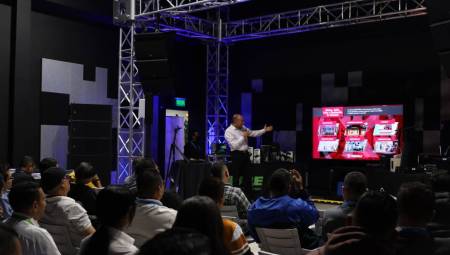![]() International. The colour pixels, developed by a team of scientists led by the University of Cambridge, are compatible with roll-to-roll manufacturing on flexible plastic films, drastically reducing their production cost. The results are reported in the journal Science Advances.
International. The colour pixels, developed by a team of scientists led by the University of Cambridge, are compatible with roll-to-roll manufacturing on flexible plastic films, drastically reducing their production cost. The results are reported in the journal Science Advances.
It's been a long-standing dream to mimic color-changing octopus or squid skin, allowing people or objects to disappear into the natural background, but making flexible display screens for large areas remains prohibitively expensive because multiple layers are built with high precision.
At the center of the pixels developed by the Cambridge scientists is a small gold particle about a billionths of a meter in diameter. The grain sits on a reflective surface, trapping light in the space in between. Around each grain is a thin, adhesive layer that changes chemically when changed electrically, causing the pixel to change color across the spectrum.
The team of scientists, from different disciplines including physics, chemistry and manufacturing, created the pixels by coating vats of golden grains with an active polymer called polyaniline and then spraying them onto mirror-coated flexible plastic, to drastically reduce the cost of production.
Pixels are the smallest ever created, a million times smaller than typical smartphone pixels. They can be seen in sunlight and, because they don't need constant power to keep their color set, they have an energy yield that makes large areas feasible and sustainable. "We started by washing them over aluminized food packets, but then we found that spray spraying is faster," said co-author Hyeon-Ho Jeong, from Cambridge's Cavendish Laboratory.
"These are not the normal tools of nanotechnology, but this kind of radical approach is needed to make sustainable technologies feasible," said Professor Jeremy J Baumberg, from the Centre for Nanophotonics at Cambridge's Cavendish Laboratory, who led the research. "The strange physics of light at the nanoscale allows it to be changed, even if less than a tenth of the film is covered with our active pixels. That's because the apparent size of each pixel for light is many times larger than its physical area when using these resonant gold architectures."
Pixels could enable a host of new application possibilities, such as building-sized display screens, architecture that can turn off solar heat charging, active camouflage clothing and coatings, as well as small indicators for upcoming Internet of Things devices.
The team is currently working to improve the color gamut and is looking for partners to further develop the technology.
The research is funded as part of an investment by the UK Engineering and Physical Sciences Research Council (EPSRC) in the Cambridge NanoPhotonics Centre, as well as the European Research Council (ERC) and the China Grants Council.















